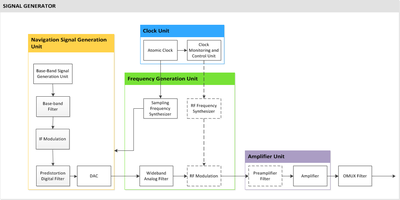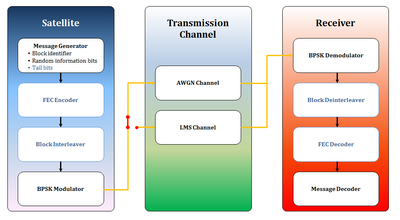ADVISE - Advanced Signal-In-Space Techniques
 This project aims at investigating advanced signal design techniques for future radio navigation signals in L-, S- or C- bands. The study is meant to be nonspecific of a particular radiofrequency band and bandwidth, but intended to be of a parametric kind instead.
This project aims at investigating advanced signal design techniques for future radio navigation signals in L-, S- or C- bands. The study is meant to be nonspecific of a particular radiofrequency band and bandwidth, but intended to be of a parametric kind instead.
The aspects of interest in this activity fall in the area of Signal-In-Space Modulation and Data Delivery (also known as message coding). A non-exhaustive list of topics is provided in the following:
Modulation
- Capability to support efficiently different channels on the same carrier allowing separate reception, e.g. pilot and data channel, or several data channels, etc.
- Co-existence with other systems: low out-of-band emissions and high spectral separation.
- The robustness to payload linear and nonlinear distortions.
- The efficiency in the exploitation of the available bandwidth in terms of spectrum occupation.
- The acquisition and tracking performance and robustness in realistic propagation channels.
Data Delivery
- Robustness of data delivery to fading, shadowing and link obstruction in realistic propagation
 channels.
channels. - Support of spatial and time diversity (MIMO).
- Support of different protection for different parts of the message.
- Low Time-to-First-Fix and aiding to acquisition of other GNSS signals.
The study requires a significant number of analyses and trade-offs among different alternatives by means of analytical mathematical models and simulation tools developed ad-hoc.
|
Contact: Funded by: Duration: Cooperation: |
Elias Gkougkas, Dominik Dötterböck European Space Agency (ESA) Beginning 2010 Wireless Systems Engineering and Research (Italy), École nationale de l’aviation civile (France), Joanneum Research (Austria) |